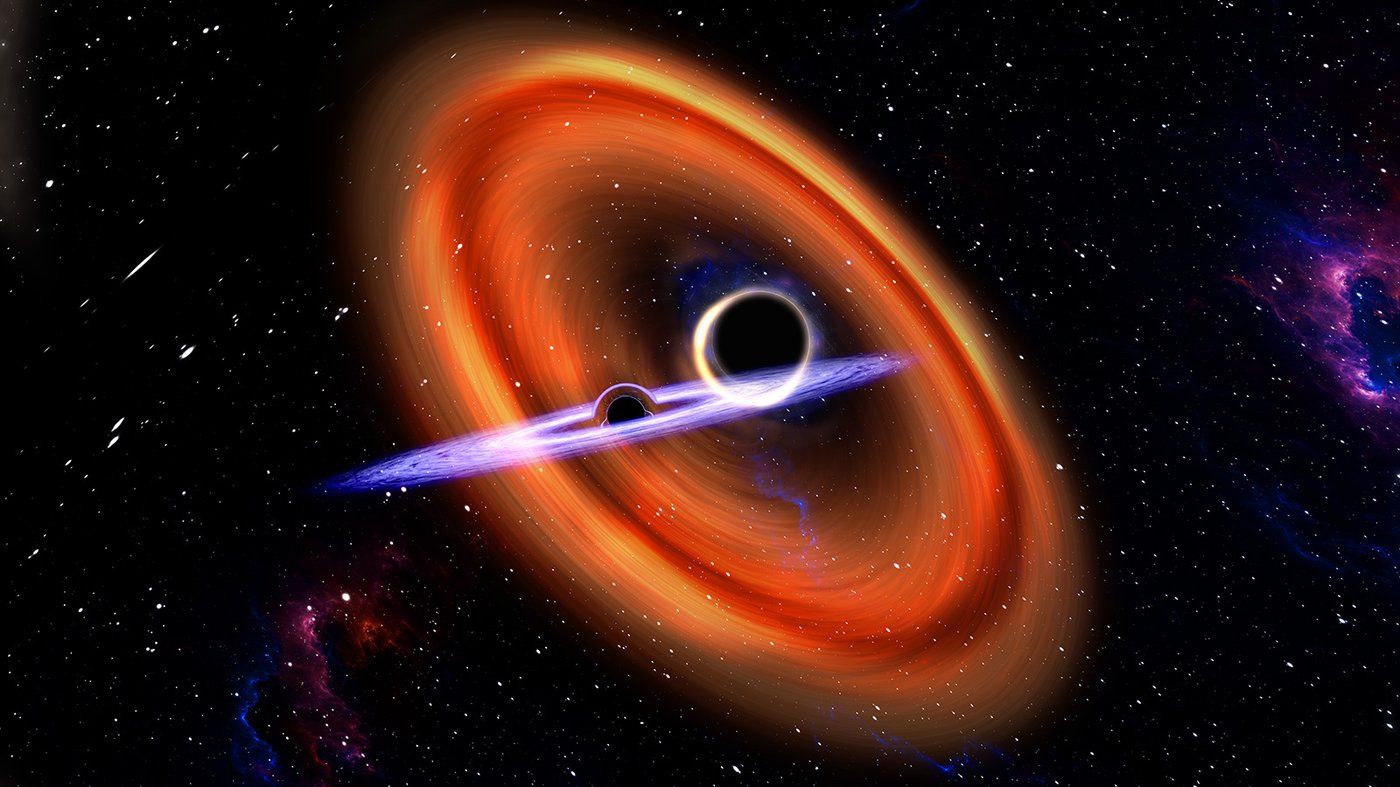A pair of distant black hole mergers, measured just one month apart in late 2024, are enhancing scientists’ understanding of the nature and evolution of the most violent deep-space collisions in our universe. These new observations suggest that the colliding black holes themselves may have been the products of earlier cosmic smashups.
—
**Gravitational Waves and Black Hole Mergers**
Gravitational waves are ripples in space-time caused by cataclysmic events in deep space, with the strongest waves produced by the collision of black holes. The recent duo of mergers, detected within a month of each other, offers fresh insights.
The first merger, GW241011, detected on October 11, 2024, occurred roughly 700 million light-years away. It resulted from the collision of two black holes—one about 20 times the mass of our Sun and the other around six times the Sun’s mass. Notably, the larger black hole in GW241011 was measured to be one of the fastest rotating black holes observed to date.
Almost one month later, on November 10, 2024, the second event, GW241110, was detected approximately 2.4 billion light-years away. This merger involved black holes roughly 17 and 8 times the mass of the Sun. While most observed black holes spin in the same direction as their orbit, the primary black hole in GW241110 was noted to be spinning in the opposite direction—a first of its kind.
—
**Advancements in Detection and Measurement**
Joe Giaime, head of the LIGO Livingston Observatory at Caltech, credits recent improvements to LIGO’s detectors for the precise measurements of the signals from these two mergers. “Better sensitivity not only allows LIGO to detect many more signals but permits deeper understanding of the ones we detect,” he says.
—
**Implications for Black Hole Formation**
Scientists from the LIGO-Virgo-KAGRA collaboration highlight that GW241011 and GW241110 are particularly intriguing for several reasons. According to Stephen Fairhurst, professor at Cardiff University and spokesperson for the LIGO Scientific Collaboration, “With both events having one black hole that is significantly more massive than the other and rapidly spinning, they provide tantalizing evidence that these black holes were formed from previous black hole mergers.”
The key clues include the large size difference between the two black holes in each merger—the larger black hole was nearly double the size of its partner—and the unusual spin orientations of the larger black holes. A natural explanation for these peculiarities is that these black holes are the product of earlier coalescences.
This process, known as a **hierarchical merger**, suggests that these systems formed in dense environments, such as star clusters. In such environments, black holes are more likely to collide and merge multiple times.
—
**Insights into Black Hole Environments**
“These two binary black hole mergers offer us some of the most exciting insights yet about the earlier lives of black holes,” said Thomas Callister (PhD ’20), co-author and assistant professor at Williams College. “They teach us that some black holes exist not just as isolated partners but likely as members of a dense and dynamic crowd. Moving forward, the hope is that these events and other observations will teach us more and more about the astrophysical environments that host these crowds.”
—
**Testing Fundamental Physics**
Data collected from these mergers also validates, with unprecedented accuracy, fundamental laws of physics that were predicted over 100 years ago by Albert Einstein. Furthermore, the observations help advance the search for new, still unknown elementary particles with the potential to extract energy from black holes.
—
For the full version of this story, visit the LIGO-Virgo-KAGRA collaboration.
**Paper Title:**
*GW241011 and GW241110: Exploring Binary Formation and Fundamental Physics with Asymmetric, High-Spin Black Hole Coalescences.*
*Written by Whitney Clavin.*
https://knowridge.com/2025/11/colliding-black-holes-might-have-formed-from-earlier-cosmic-smashups/


